Posts Tagged: California
USC Biologist on 'Trends of Bee Biodiversity in North America'
Bee biodiversity? It promises to be an interesting seminar. Assistant professor Laura...

A yellow-faced bumble bee, Bombus vosnesenskii, sipping nectar from an Amethyst Sea Holly, Eryngium amethystinum, in Sonoma. (Photo by Kathy Keatley Garvey)
There Is No Planet 'B'
There is no "Planet B." The Earth is all we have. Today, April 22, is Earth Day (an annual...
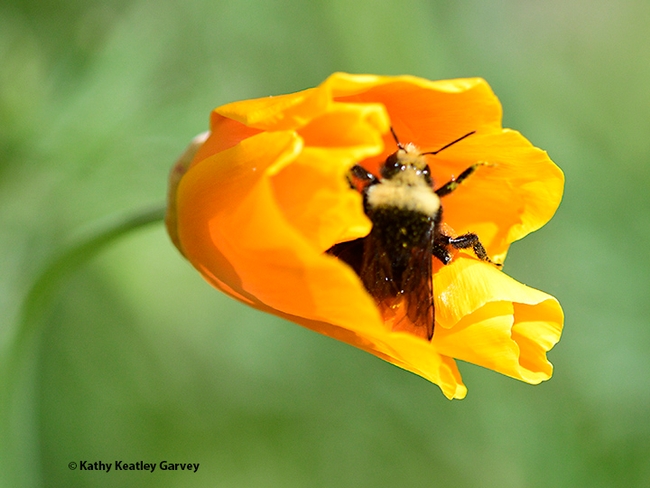
A yellow-faced bumble bee,Bombus vosnesenskii, buzzes into a barely opened California golden poppy in a Vacaville garden. (Photo by Kathy Keatley Garvey)
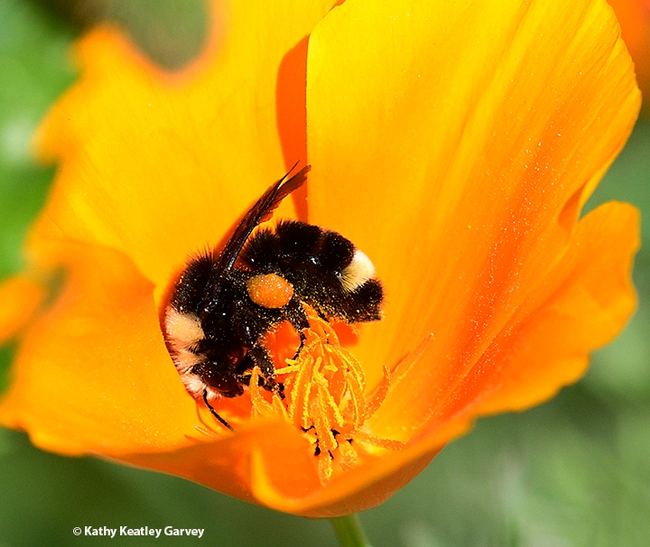
Check the orange pollen on this yellow-faced bumble bee, Bombus vosnesenskii(Photo by Kathy Keatley Garvey)
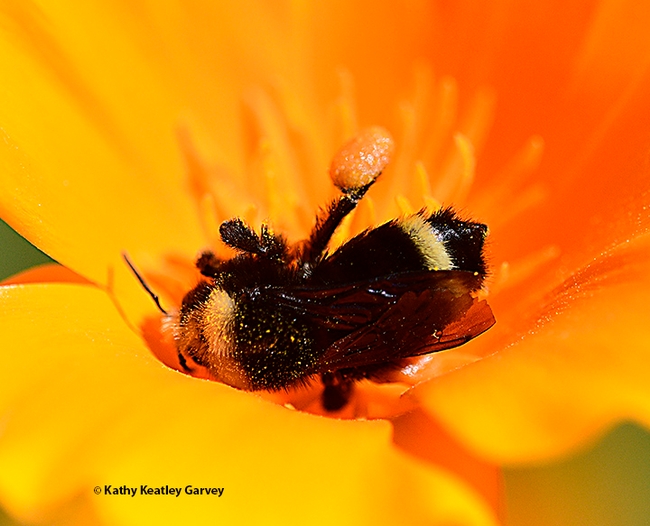
And we have a lift-off! The pollen basket is easily recognized here. (Photo by Kathy Keatley Garvey)
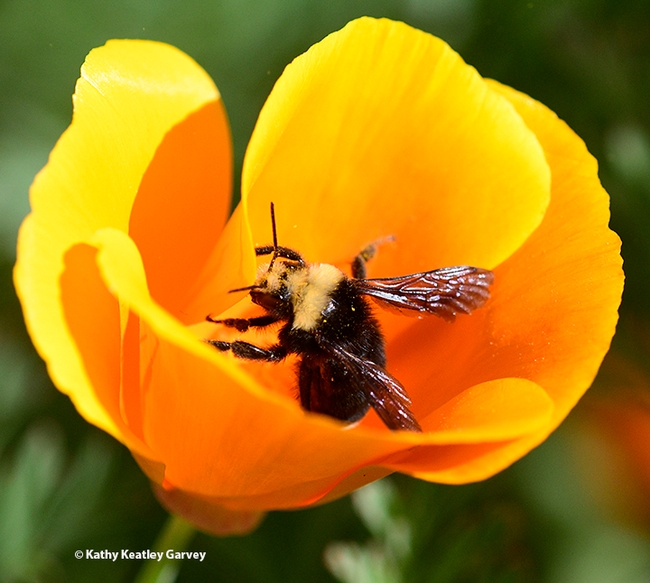
Ready for take-off! The bumble bee, Bombus vosnesenskii, prepares to leave the California golden poppy. Both are natives. (Photo by Kathy Keatley Garvey)
All the 'Bugs' at UC Davis Picnic Day Will Be at Briggs Hall
Wait! Don't head over to the Bohart Museum of Entomology in the Academic Surge Building on...
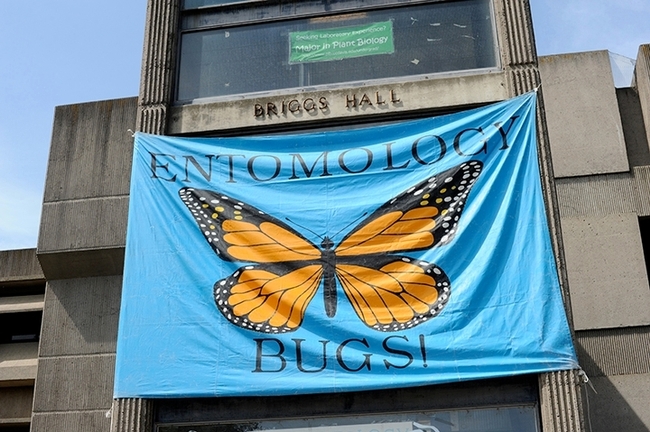
A monarch banner beckons visitors to Briggs Hall, home of the UC Davis Department of Entomology and Nematology. (Photo by Kathy Keatley Garvey)
Monarchs and California Golden Poppies: Color Them Orange
Monarchs and California golden poppies...Color them orange...Color them bold...Color them...
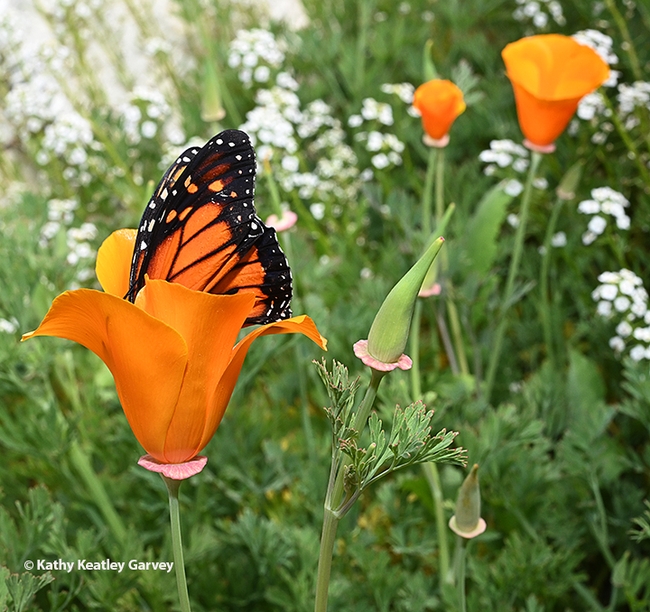
Color them orange: A California golden poppy and a monarch butterfly in a Vacaville garden. (Photo by Kathy Keatley Garvey)
Frank Zalom: 'The Michael Jordan of IPM'
Accolades continue to flow. When UC Davis distinguished professor emeritus and noted ...
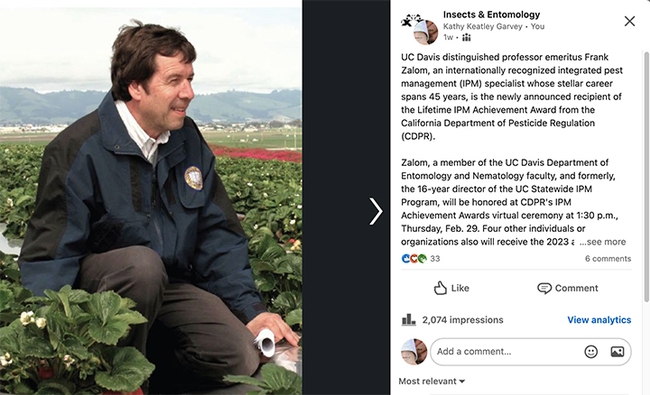
Information shared on LinkedIn (Screen shot)
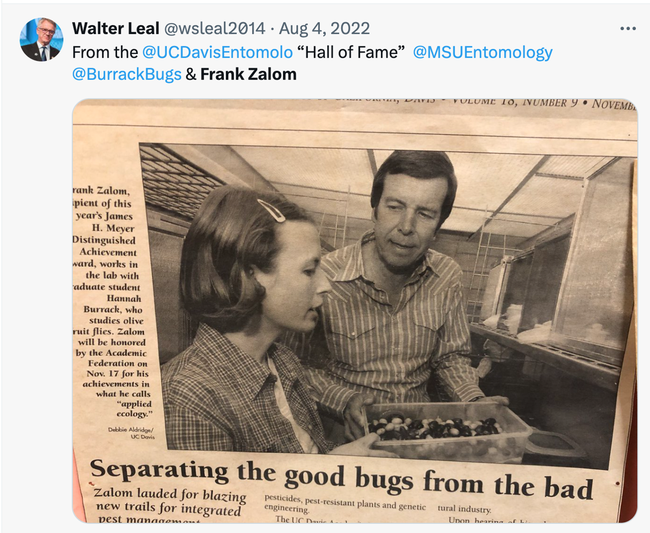
UC Davis distinguished professor Walter Leal, former professor and chair of the Department of Entomology, shared this archived news story about Frank Zalom and graduate student Hannah Burrack on X (formerly Twitter). (Screen shot)